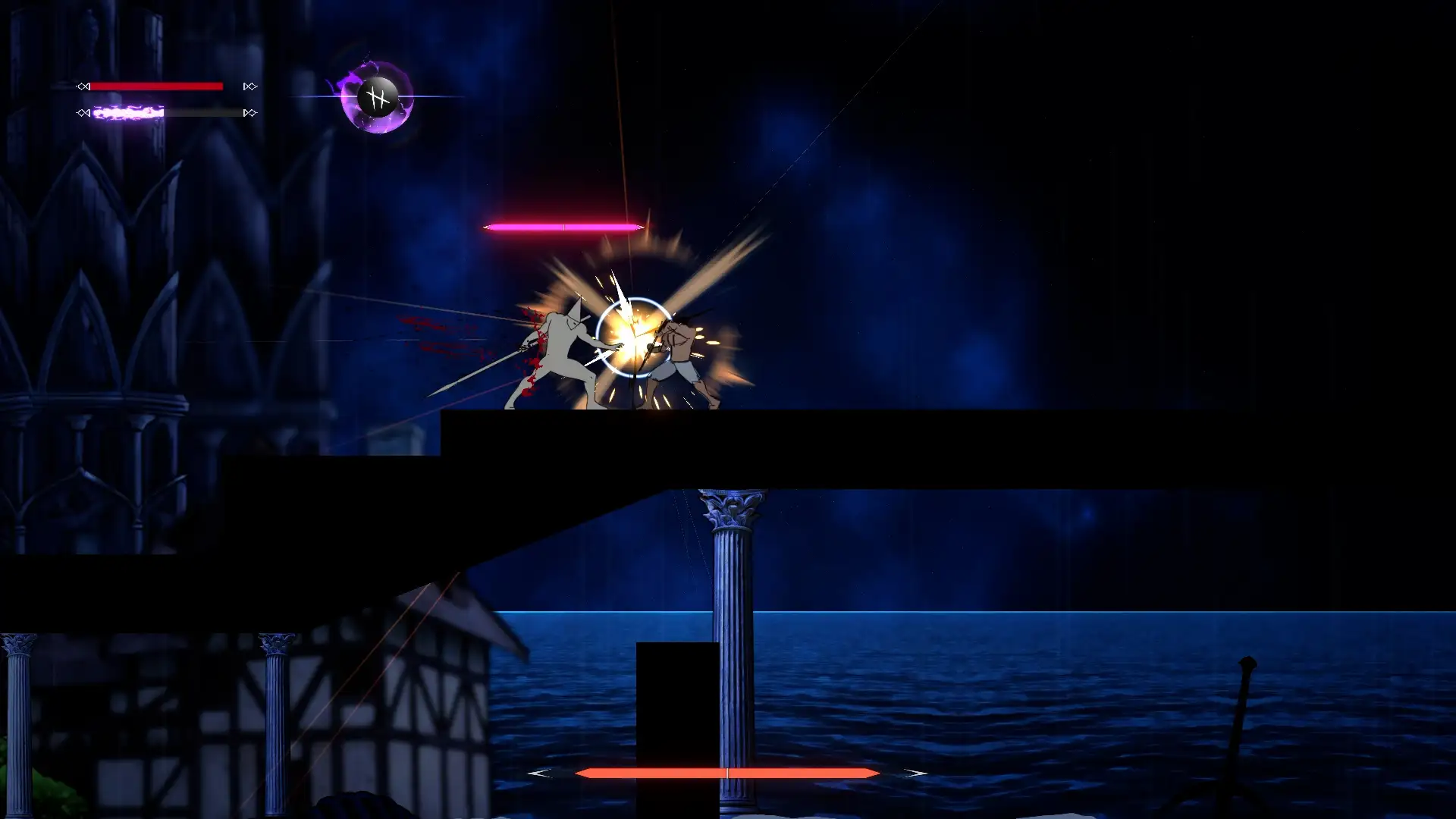
| Engine: | Unity |
| Language: | C# |
| Tools Used: | Visual Studio, Photoshop, After Effects |
| Duration: | ~4 months |
| Completion: | 2021 |
| Role: | Lead Programmer and Technical Artist |
This is a small 2.5D Metroidvania demo we developed as a team of 5 — two programmers, a level designer, a concept artist, and myself. It's packed with all sorts of features:
- Player controller: Rigid body-based movement with collision detection, jumping, dashing, attacking, blocking, stunning, and parrying mechanics, along with a few other things.
- Enemy AI: Patrolling paths, player detection, blocking, attacking behaviors, and even combo attacks. The combo attacks are visually appealing and add just the right amount of difficulty without making things unfair — like something you'd expect from an elite enemy, just below a boss fight.
- Virtual Cameras: Smooth transitions, vertical locking at the base level, horizontal locking at map edges, and more refinements.
- Music & sound effect: Player and enemy SFX, combat impact sounds, dynamic and spatial music transitions triggered by location, and more.
- Particle System & VFX: Attack effects, block effects, combat sparkles, blood splatter, rain, and environmental particle systems and VFX.
- Animations: Initially implemented using Unity's Animator, then transitioned to scripted animations for better performance and scalability.
My contributions include integrating assets, designing and implementing VFX and particle effects, and developing the player controller and input system. A big part of my focus was on combat: I worked closely with the team on the combat system, AI pathfinding, and enemy behavior to ensure everything felt responsive. I also handled camera transitions, Animator supervision, scripted animations, and music and SFX triggers, making sure key moments had the right impact.
PLAYER CONTROLLER
Hitbox & collision detection, movement, jumping, dashing, attacking, blocking, stunning, and parrying mechanics.
ENEMY IA
Enemy Patrol:
Enemy Attack 1:
Enemy Attack 2 (thrust):
Enemy Attack 3 (combo):
COMBAT SYSTEM
Heavily inspired by Sekiro, but adapted to a 2.5D Metroidvania-style environment.
Blocking increases the stamina bar (yellow bar at the bottom). If it reaches max capacity, the player gets stunned.
Parries require precise timing, blocking right before an enemy attack lands. Successfully parrying prevents your stamina bar from increasing while raising the enemy's stamina instead. Particle effects and sound cues indicate a successful parry.
CAMERA SYSTEM
Base-Level Locking: When the player is at the base of the map, virtual cameras lock their Y-axis movement, similar to Hollow Knight.
Vertical Tracking: In vertically designed maps, the camera follows the player's Y movement with a slight damping effect.
Special Area Transitions: Certain key areas, such as boss arenas or unique encounters, have custom camera transitions to keep the focus where it matters.